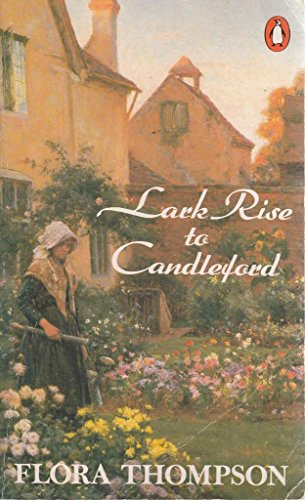 How is it remotely possible that a sequel published nearly tw hundred years after the original novel and by another author could reflect the style and feeling of the first story? P. D. James succeeded brilliantly with Death Comes to Pemberley, published in 2011 by Alfred A. Knopf, New York, and a sequel, of sorts, to Jane Austen’s Pride and Prejudice (1813).
How is it remotely possible that a sequel published nearly tw hundred years after the original novel and by another author could reflect the style and feeling of the first story? P. D. James succeeded brilliantly with Death Comes to Pemberley, published in 2011 by Alfred A. Knopf, New York, and a sequel, of sorts, to Jane Austen’s Pride and Prejudice (1813).
James seamlessly sewed a murder mystery plot to a beloved 19th century romance and the reader does not feel the change in fabric. It seems as though P.D. James created these characters herself, so genuinely did she spur them to speak and act. Death Comes to Pemberley picks up only six years after Elizabeth Bennet’s marriage to Fitzwilliam Darcy. They are the proud parents of two healthy sons, and manage the glorious Pemberley estate with a mixture of hard work, team effort, and grace.
A murder is needed to disrupt the placid existence of the happy family and P. D. James provided a complex one, drawing in a very disturbing murder suspect, rogue George Wickham, with whom the Darcys severed ties after his disgraceful elopement with Elizabeth’s sister, Lydia.
This is definitely not a gory, forensic mystery. A delightful romance softens the story – Mr. Darcy’s lovely sister, Georgiana, now of marriageable age, must contend with the attentions of two suitors.
The reader experiences the delight of renewing the acquaintance of Elizabeth Darcy’s father, Mr. Bennet, whose sustaining presence consoles the couple during the uproar of a murder on their property. Other family members enter the fray, sweet-tempered sister Jane, and her amiable husband, Charles Bingley, shallow, self-serving Lydia Wickham, and Darcy’s austere aunt, Lady Catherine de Bourgh. P.D.
James skillfully plotted a tasteful mystery within an authentic 19th century world, introducing the reader to the judicial system of the day. With a 30 year career in the British Civil Service, including the Police and Criminal Policy Department of Great Britain’s Home Office, P.D. James was extremely qualified to write her mystery novels, over 18 of them – many featuring Inspector Adam Dalgliesh.
P.D. James, 1920-2014, was a former governor of the BBC and a recipient of the Mystery Writers of America Grand Master Award. She lived in London and Oxford and is survived by two daughters, five grandchildren, and eight great-grandchildren.
Produced by the BBC, the TV mini-series Death Comes to Pemberley aired in 2013, starring Anna Maxwell Martin as Elizabeth Darcy, Matthew Rhys as Fitzwilliam Darcy, and Matthew Goode as George Wickham. Its lush scenery, attention to period detail, and excellent acting make it a worthwhile program. If your stack of books to read is teetering and threatening to fall over, you may enjoy this wonderful production instead.
Author’s Note: “I owe an apology to the shade of Jane Austen for involving her beloved Elizabeth in the trauma of a murder investigation, especially as in the final chapter of Mansfield Park Miss Austen made her views plain: ‘Let other pens dwell on guilt and misery. I quit such odious subjects as soon as I can, impatient to restore everybody not greatly in fault themselves to tolerable comfort, and to have done with all the rest.’ No doubt she would have replied to my apology by saying that, had she wished to dwell on such odious subjects, she would have written this story herself, and done it better.” P.D. James, 2011
P.D. James had nothing for which to apologize; she gave us a precious parting gift – the resurrection of beloved characters and a wonderful story. We owe her a debt of gratitude.



 I extend an apology to my blog readers of the male gender, but this post blatantly promotes a book series that is squarely in the “chick lit” genre; one which I think has been given a”bad rap”:
I extend an apology to my blog readers of the male gender, but this post blatantly promotes a book series that is squarely in the “chick lit” genre; one which I think has been given a”bad rap”: Another four book series by Neta Jackson, also set in present day Chicago, focuses on the wide gap between wealthy and poor as an elderly bag lady and lonely socialite develop an unlikely friendship. This series deals sensitively with dysfunctional marriage and the cycle of urban poverty. The House of Hope books in publication order are Where Do I Go?, Who Do I Talk To?, Who Do I Lean On?, and Where is My Shelter? More about the author can be found on:
Another four book series by Neta Jackson, also set in present day Chicago, focuses on the wide gap between wealthy and poor as an elderly bag lady and lonely socialite develop an unlikely friendship. This series deals sensitively with dysfunctional marriage and the cycle of urban poverty. The House of Hope books in publication order are Where Do I Go?, Who Do I Talk To?, Who Do I Lean On?, and Where is My Shelter? More about the author can be found on: 


 Twentieth-century author Madeleine L’Engle, best known for A Wrinkle in Time, a young adult novel that won the Newbery Award in 1963, wrote sixty novels during her lifetime (1918-2007). If you haven’t read A Wrinkle in Time ever or recently, I highly recommend it whether you are young, middle-aged or older: “It was a dark and stormy night. In her attic bedroom, Margaret Murry, wrapped in an old patchwork quilt, sat on the foot of her bed and watched the trees tossing in the frenzied lashing of the wind.”
Twentieth-century author Madeleine L’Engle, best known for A Wrinkle in Time, a young adult novel that won the Newbery Award in 1963, wrote sixty novels during her lifetime (1918-2007). If you haven’t read A Wrinkle in Time ever or recently, I highly recommend it whether you are young, middle-aged or older: “It was a dark and stormy night. In her attic bedroom, Margaret Murry, wrapped in an old patchwork quilt, sat on the foot of her bed and watched the trees tossing in the frenzied lashing of the wind.”


 I loved this novel when I read it as a teenager in the late 1970’s and I hope I have passed on my affection for this story to my family. First published in 1972, Watership Down, by British author Richard Adams, is a book about rabbits… 476 pages of rabbits to be exact. According to Mr. Adams, the manuscript was rejected a total of seven times, all on the same grounds that older children would think the rabbits babyish and younger children would find its adult style unlikeable.
I loved this novel when I read it as a teenager in the late 1970’s and I hope I have passed on my affection for this story to my family. First published in 1972, Watership Down, by British author Richard Adams, is a book about rabbits… 476 pages of rabbits to be exact. According to Mr. Adams, the manuscript was rejected a total of seven times, all on the same grounds that older children would think the rabbits babyish and younger children would find its adult style unlikeable.








